Last updated: April 10, 2020
Article
Insect Outbreaks in Southwest Alaska
Over the last quarter century, the spruce beetle and a suite of other insect pests have caused extensive damage in the forests of southcentral Alaska. Long-term forest monitoring and tree-ring studies are helping us to better understand the timing, frequency, and ecological effects of these outbreaks in the Southwest Alaska Network (SWAN) parks.
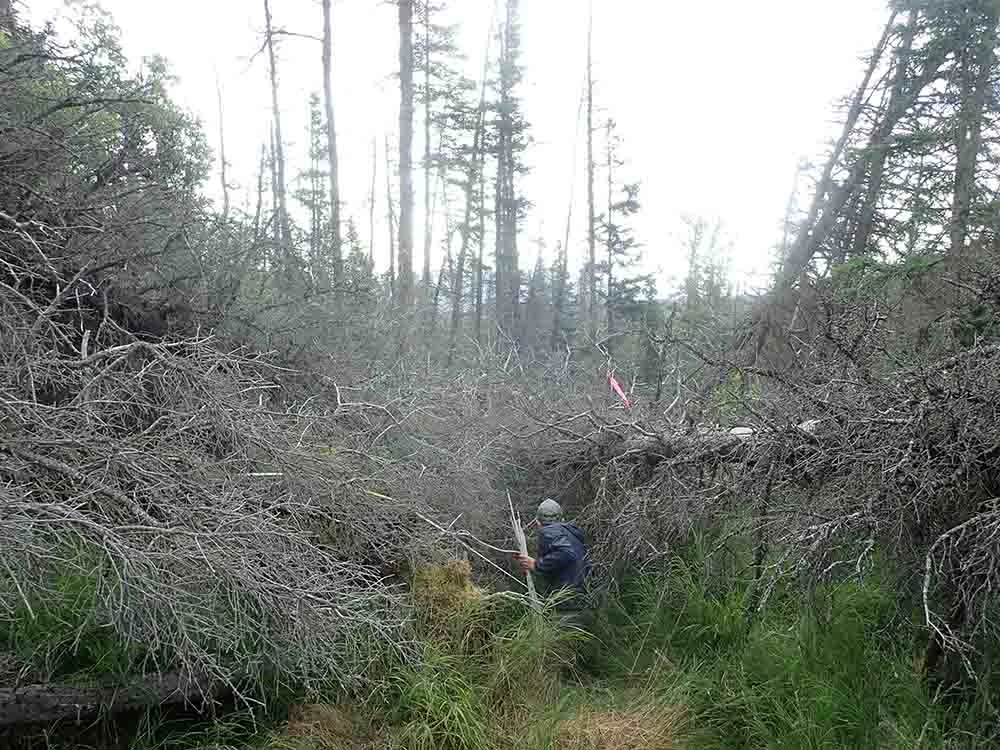
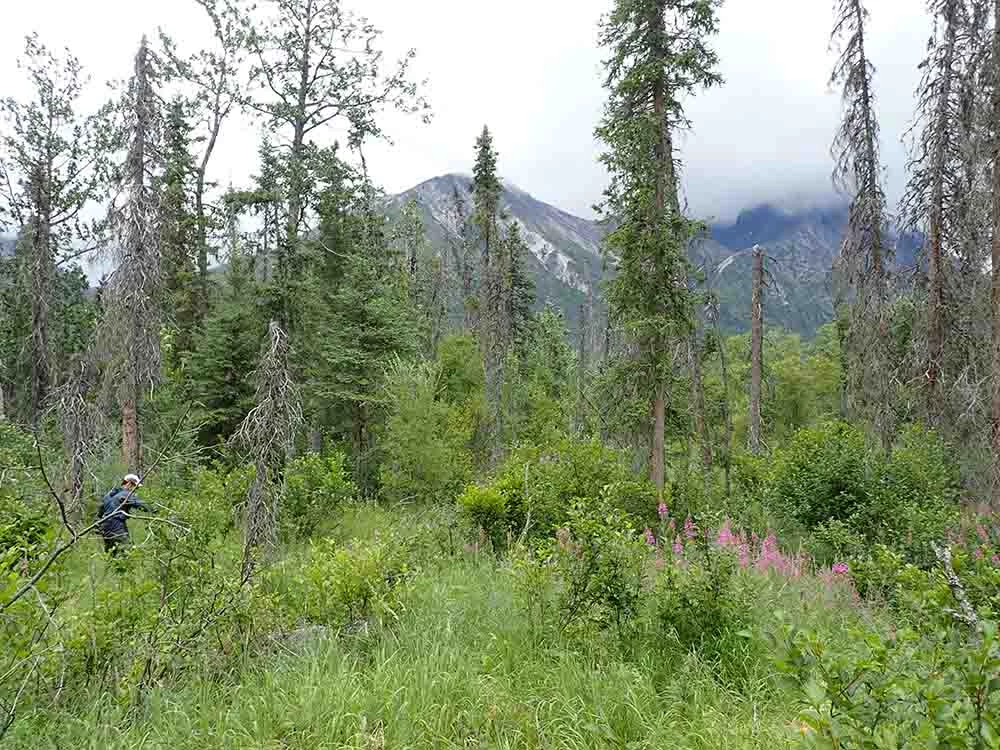
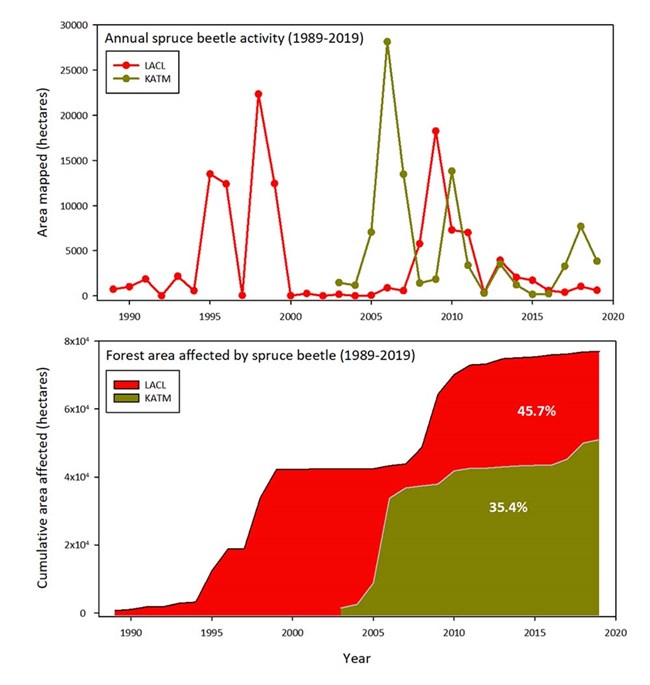
Spruce Beetle Activity in Southcentral Alaska Results in New Areas of Mortality
The spruce beetle (Dendroctonus rufipennis) outbreak that began in 2016 in southcentral Alaska entered its fourth year in 2019. Aerial surveys conducted by the US Forest Service showed a peak in spruce beetle activity in 2018, with 18,999 acres (7,688 hectares) of damage in Katmai and 2,352 acres (951 hectares) in Lake Clark National Park and Preserve (USFS 2019). By 2019, activity in the parks had declined to about 50% of 2018 levels, and much of the new activity occurred in areas that had been previously damaged (Figure 1; USFS 2019). Smaller trees and non-host species, including black spruce, are now being affected as stands of mature white spruce are exhausted (USFS 2019). To date, roughly 45% of spruce forest in Lake Clark has been damaged and 35% of forest has been affected in Katmai (Figure 1).
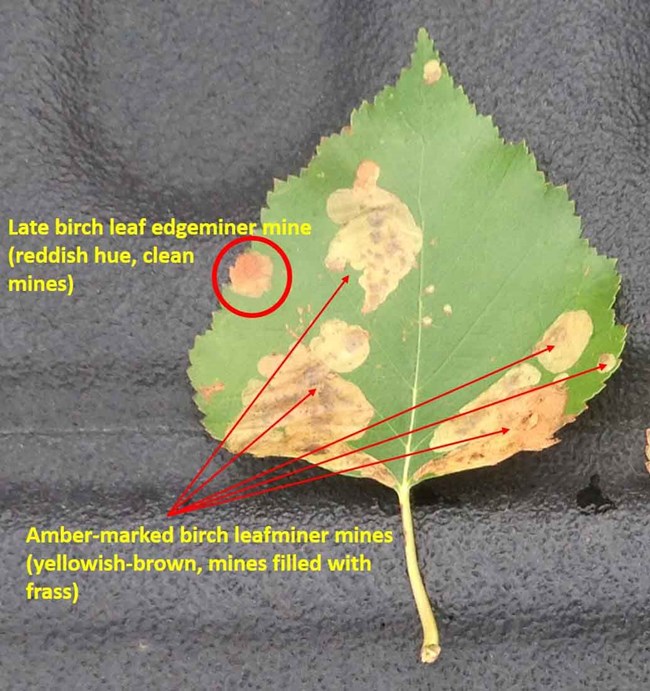
US Forest Service
Birch Leaf-miners on the Alaska Peninsula
A small area affected by non-native birch leaf-miners has been found in the Big Lakes area, just north of Lake Clark National Park and Preserve (USFS 2019). The damage was thought to be caused by the amber-marked birch leaf-miner (Profenusa thomsoni) and/or late birch leaf edge-miner (Heterarthrus nemoratus; Figure 2), both of which are originally from northern Europe. Prior to 2018, these two species were thought to be confined in Alaska to towns and road corridors. However, surveys in the Matanuska-Susitna Valley in 2018 showed birch leaf-miner activity extending well beyond the road system, and over 170,000 acres (68,795 hectares) of damage were recorded that year. An additional 80,000 acres (32,375 hectares) of damage were mapped on the northern Kenai Peninsula. It is unclear how and when these leaf-miners arrived in the Big Lakes area, but it is a popular recreation site and the insects may have been introduced from one of the other affected areas.
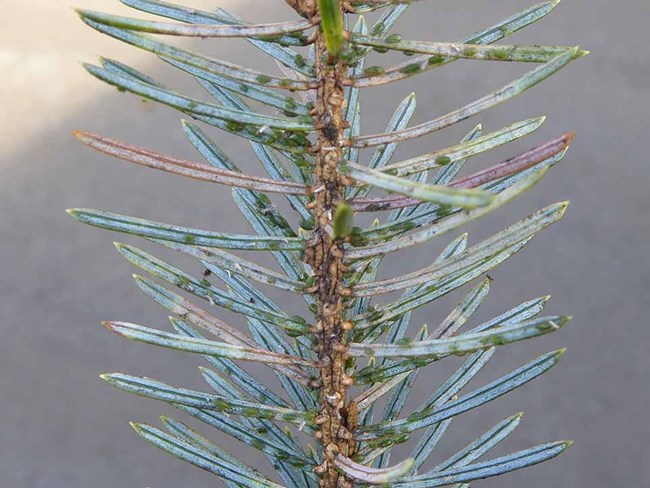
US Forest Service
Spruce Aphid Activity Reported on the Kodiak Archipelago
The non-native spruce aphid (Elatobium abietinum; Figure 3) was first observed on the Kenai Peninsula in 2015, primarily around Homer and Halibut Cove, and with scattered occurrences along the outer coast of Kenai Fjords National Park. Since 2016 activity has dropped off, with only limited damage around Homer in 2019. New infestations were observed in the Kodiak Archipelago (26 acres) in 2019, two on the Kupreanof Peninsula of Kodiak Island and one near Onion Bay on Raspberry Island. The aphid has not yet been detected in Lake Clark or Katmai national parks and preserves.
Reference
U.S. Forest Service. 2018. Forest Health Conditions in Alaska – 2017. U.S. Forest Service, Alaska Region, Anchorage, AK. Publication R10-PR-43, 74 pp.
Data are from annual aerial surveys conducted by the US Forest Service (1989-2019). Learn more about the current spruce beetle outbreak in Alaska.
